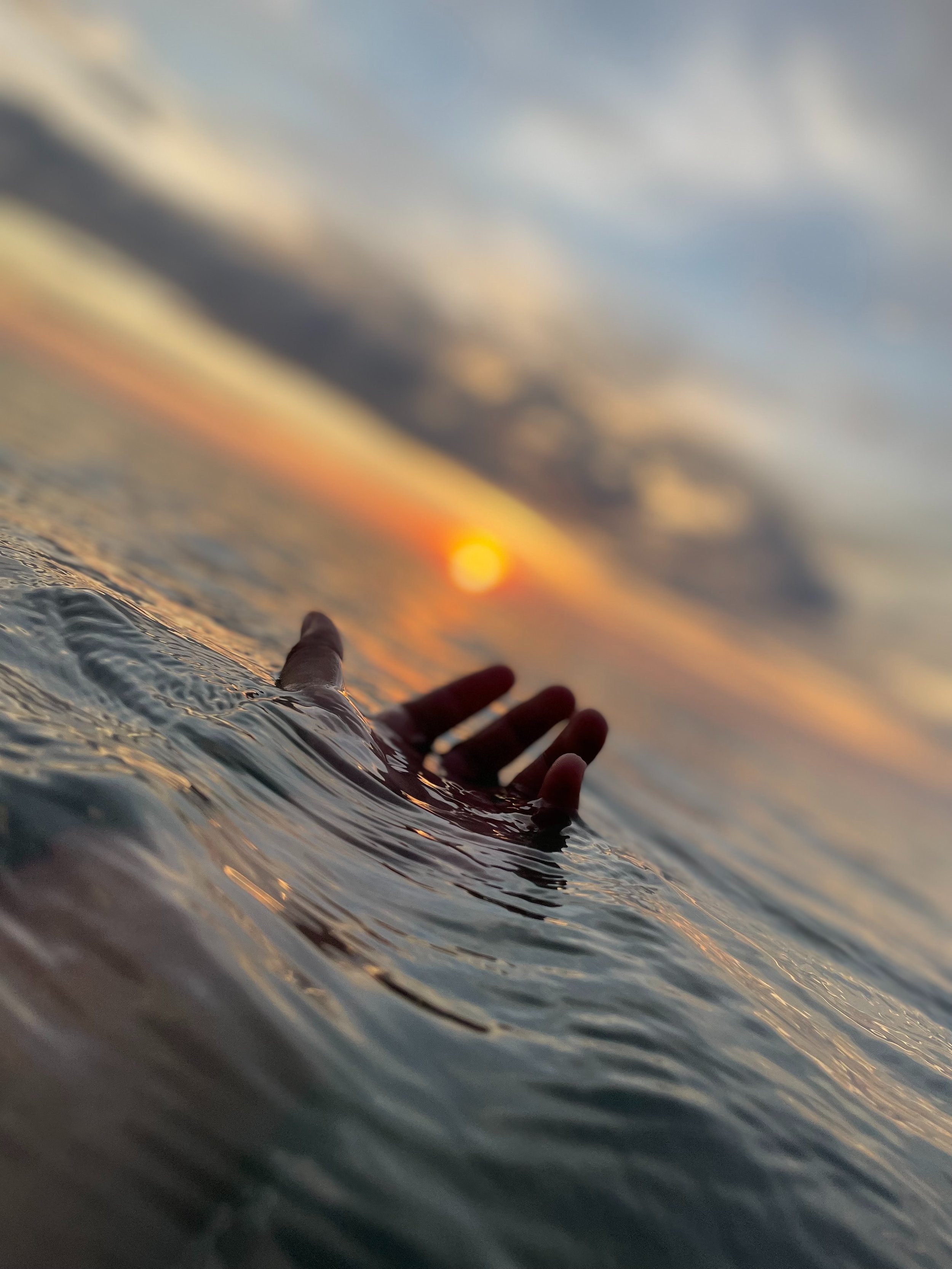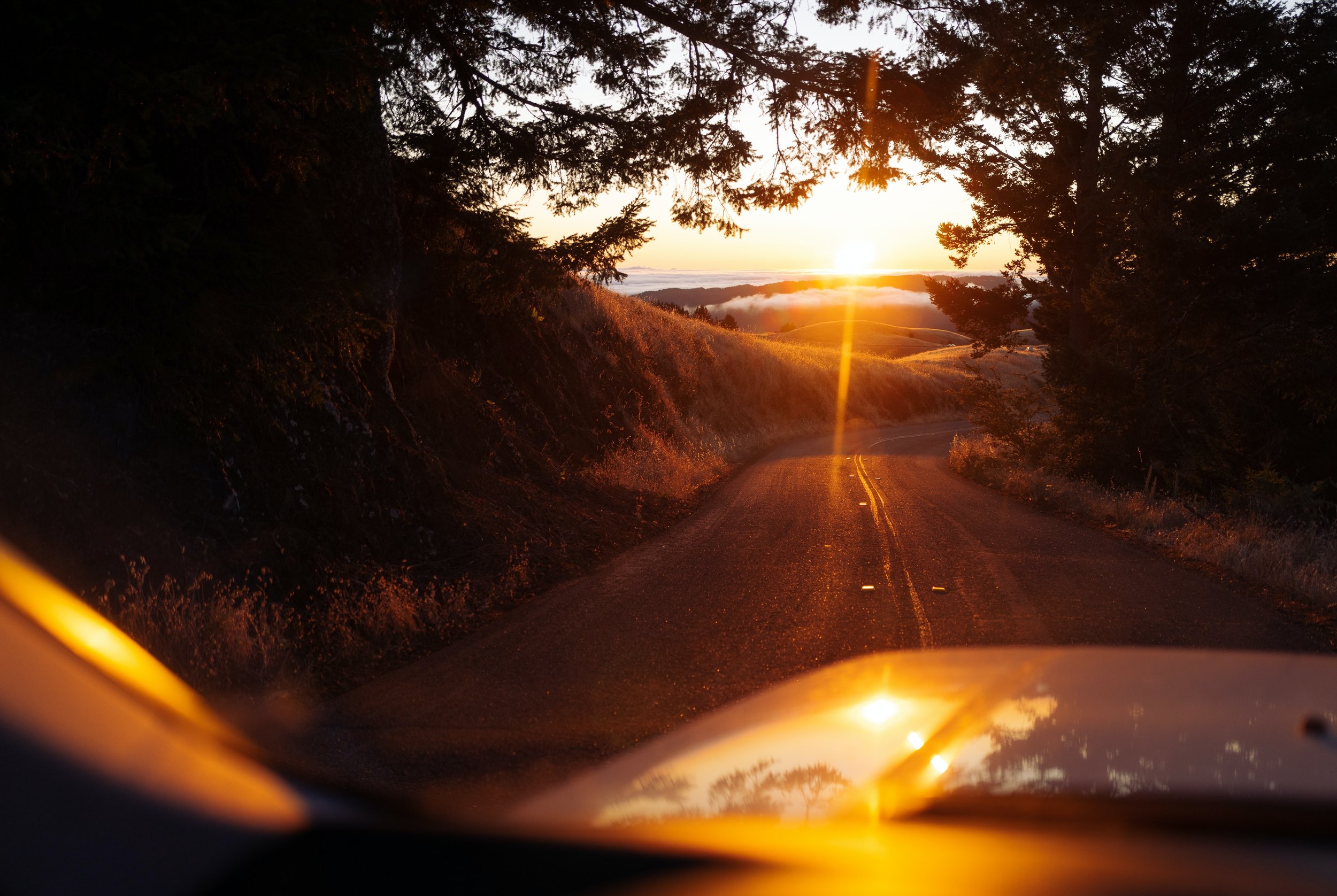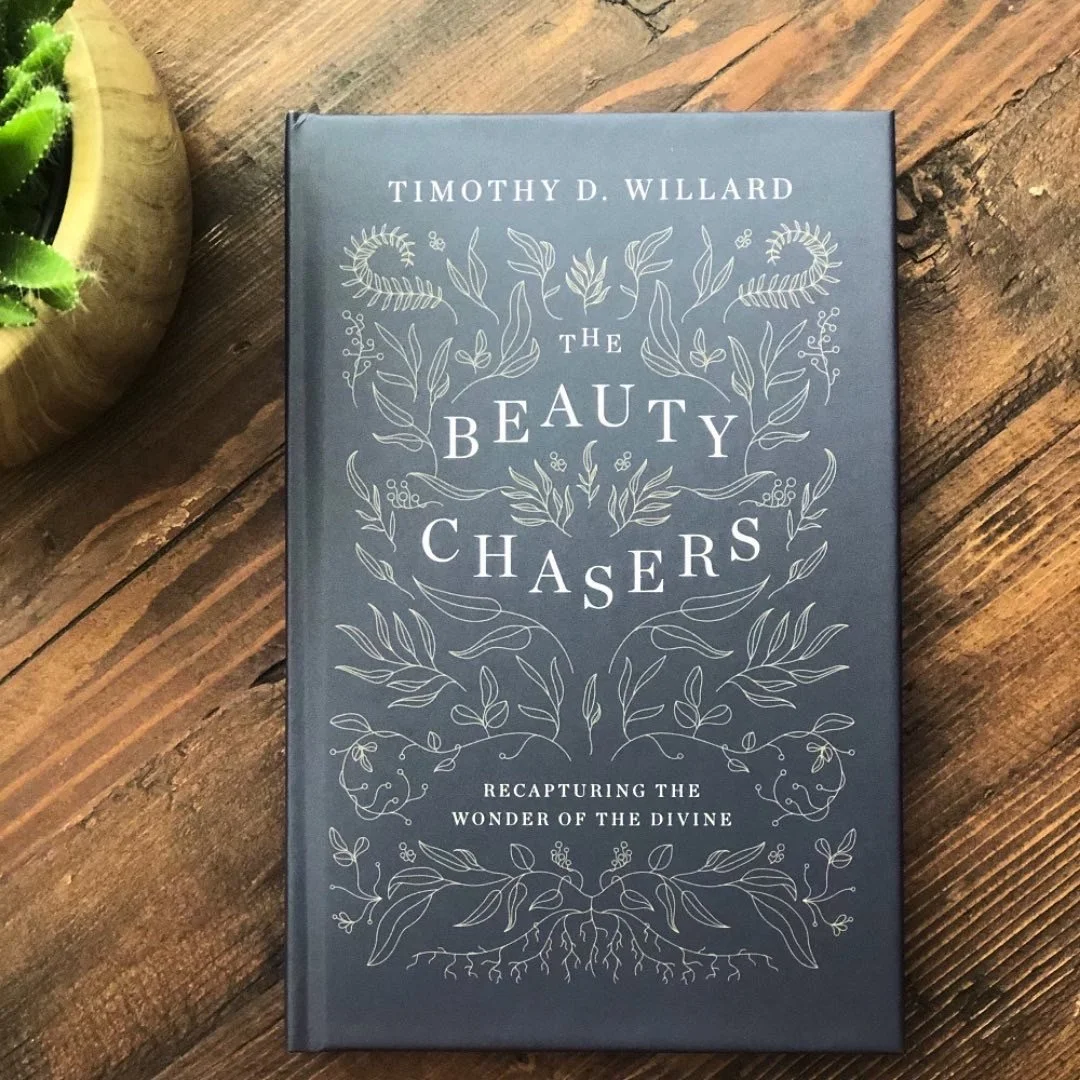Read Our Featured Articles
How Pursuing Beauty Makes Us Better Humans
Our culture desperately needs to regain its ability to see again.
Ever bombarded with distraction and numbed by convenience, our eyes fall lazy to myriad photographic images that saturate our days through phone apps, internet browsers, and the television.
But here’s something we don’t think about when we consider how distraction works in our lives.
Distraction and convenience work in tandem.
Think about how your day is ordered and governed by convenience. It’s woven into the fabric of everything we do. From a business and marketing perspective, all major retail companies spend millions of dollars on research and development, tech upgrades, on psychological profiling to understand how they can offer you their product with zero friction involved in the sale.
We know this as consumers, but we don’t think about how this frictionless convenience affects our humanity.
Consider how convenience works in your life.
Everything lives within our phones. I can order dinner, groceries, business or art supplies, and download a movie while sitting on my Adirondack chair on the back terrace.
Frictionless consumption.
The result? We are training ourselves to prefer convenience—having something done for us—over “doing things” ourselves. Tim Wu wrote about the dark side of convenience in the New York Times. He says:
Though understood and promoted as an instrument of liberation, convenience has a dark side. With its promise of smooth, effortless efficiency, it threatens to erase the sort of struggles and challenges that help give meaning to life.
Created to free us, it can become a constraint on what we are willing to do, and thus in a subtle way it can enslave us.
Does Wu's saying that convenience enslaves us go too far?
I don’t think so. Anything taken to extremes can enslave us. We are creatures of desire. But when our desires get the best of us, nothing good comes of it.
But at the same time, does this notion of an enslaving convenience make convenience itself wrong? No, that would create a false dilemma. It’s not convenience or no convenience. Outside of this false dilemma lies the path of wisdom.
Wisdom tells us to pursue moderation in all things. And, to off-set our culture which is bent on only offering us extremes, wisdom says pursue understanding about the effects of convenience and distraction.
We don’t have to look any farther than the way God created us to live within the created order, working with our hands and our minds, and using our senses to participate with God and his created order.
God Created Us To Live Whole Lives, Not Isolated Ones
We must get outside and live with the earth beneath our feet and the sky above our heads. God created us to pursue beauty, not spectate from a lawn chair, drunk on the convenience of a push-button life.
{The Old Testament idea of “work” was multifaceted. It included "boda,” which is sacred work, as well as the idea of work pursued as craft. Intrinsic to our daily work is the pursuit of beauty—a perfection or completeness in what we build and the type of people we mold ourselves to be.}
But what happens is we don’t get into the outside world nearly enough. We allow the influence of screen time to reprogram our thinking, even how we see the world.
Essayist Susan Sontag says our photographic culture teaches us a “new visual code.” We think little of time spent scrolling through images. We don’t realize, however, that we’re training our minds to interpret the world and to make conclusions about what is worth seeing.
"This very insatiability of the photographing eye changes the terms of confinement in the cave, our world. In teaching us a new visual code, photographs alter and enlarge our notions of what is worth looking at and what we have a right to observe.
They are a grammar and, even more importantly, an ethics of seeing. Finally, the most grandiose result of the photographic enterprise is to give us the sense that we can hold the whole world in our heads — as an anthology of images.
What is worth seeing. Think about that.
The moments spent on our phones indoctrinate us to make value judgments on the worth of certain images over others. Consider how this kind of value judgment factors into a culture of comparison. Our phones train us to cast judgment on others because our image-centric culture emphasizes the visual—and most often, the visual that we have not engaged with or participated in.
This reality has played out over the last several years with a report published by The Wallstreet Journal about how META targets young ladies to become addicted to Instagram and the visual comparison culture. Why? Because young ladies see things worn or used by influencers, and they desire them.
META has admitted to this. The ramifications are very harmful to young ladies; their confidence, self-esteem, and self-worth. Psychologists are seeing an upswing in young ladies who are now dealing with depression due to this image-driven culture proliferated by the use of social media.
How does this affect the art world?
What does this “ethics of seeing” do to our ability to appreciate art or even pursue learning non-photographic arts, like watercolor painting?
Not everyone longs to be a painter. I get that. But the point of this notion of a new “ethic of seeing” rests in the pursuit of beauty.
The painter, sketcher, or pianist pursues their craft, and in that pursuit, they learn to see and hear the world in a way that fosters curiosity, spurs learning, and creates longing. Curiosity, learning, and longing work on us and help us derive meaning from our world.
But if digital information and images program us to see the world in a particular way and, thus, to value it in a way consistent with the world’s values, and we buy into this way of valuing the world, then we can ultimately ransom our God-given curiosity for that dopamine hit we get from social media and digital engagement.
Pursuing beauty reminds us that we cannot keep the whole world logged in our heads with an imagery index provided by the Internet. Likewise, the values of beauty encountered in the natural world, like wonder, awe, and terror, remind us of the inestimable nature of the universe and point to something beyond the created order, namely God.
So, How Can We Remain Constantly Curious Beauty Chasers?
For starters, we need to go marveling.
A Methodist preacher named Fred Craddock tells the story of how his ancestors used to take walks after church on Sundays.
On the walks, they’d “admire nature and collect unusual things” such as rocks or wildflowers. They called it “going marveling.” The intentional observance and gathering of natural things we take for granted daily strengthens our ability to see the world.
The English poet Gerard Manly Hopkins believed, “When you look hard at something, it seems to look hard at you.” It’s the idea that the more time we spend observing something, the more understanding we gain.
Have you ever noticed that when you know little about something, you have difficulty describing it? Understanding our world begins with our natural human curiosity.
“That seems obvious, but so what?”
Well, have you ever considered how well we even know how to describe a tree or the sky or the ocean? One of my favorite examples of this is Victorian British art critic John Ruskin’s explanation of our common misconception about the nature of ocean waves:
Most people think of waves as rising and falling. But if they look at the sea carefully, they will perceive that the waves do not rise and fall.
They change.
Change both place and form, but they do not fall; one waves goes on, and on, and still on; now lower, now higher, now tossing its mane like a horse, now building itself together like a wall, now shaking, now steady, but still the same wave, till at last it seems struck by something, and changes, one knows not how,—becomes another wave.
When I first read Ruskin’s observation on the nature of an ocean wave, I sat stunned.
“Of course,” I thought. I was amazed at my own inability to describe something so common as a wave.
Then I began looking at other natural things we (read: I) take for granted, like the sky, trees, or how pelicans swim so close to curling waves at the beach.
When I really stopped to consider their makeup, their nature, even their color, or a pelican’s intrinsic desire to ride waves, I discovered that I’d raced by these objects or occurrences without truly seeing them.
Or even worse, I simply ignored them.
If I valued and pursued beauty, would it not show in my understanding and appreciation of the world?
Had I fallen prey to our photographic and convenience-drunk society, failing to look at things that I can’t scroll?
Secondly, we need to be people patient in wonder. Perhaps we don’t see all that well because we lack patience.
The writer David McCullough tacked a plaque above his desk that reads: “Look at your Fish.” It’s a story about the value of seeing.
Take a moment and read McCullough’s response to an interviewer from The Paris Review about why he keeps this plaque about his desk and the significance of this short statement: “Look at your fish.”
“Look at your fish.” It’s the test that Louis Agassiz, the nineteenth-century Harvard naturalist, gave every new student. He would take an odorous old fish out of a jar, set it in a tin pan in front of the student and say, Look at your fish.
Then Agassiz would leave. When he came back, he would ask the student what he’d seen. Not very much, they would most often say, and Agassiz would say it again:
Look at your fish.
This could go on for days.
The student would be encouraged to draw the fish but could use no tools for the examination, just hands and eyes.
Samuel Scudder, who later became a famous entomologist and expert on grasshoppers, left us the best account of the “ordeal with the fish.”
After several days, he {Samuel Scudder} still could not see whatever it was Agassiz wanted him to see. But, he said, I see how little I saw before.
Then Scudder had a brainstorm and he announced it to Agassiz the next morning: Paired organs, the same on both sides. Of course! Of course! Agassiz said, very pleased.
So Scudder naturally asked what he should do next, and Agassiz said, Look at your fish.
I love that story and have used it often when teaching classes on writing, because seeing is so important in this work.
Insight comes, more often than not, from looking at what’s been on the table all along, in front of everybody, rather than from discovering something new.
Seeing is as much the job of an historian as it is of a poet or a painter, it seems to me. That’s Dickens’s great admonition to all writers, “Make me see.”
Are We Losing Our Inner Richness?
In 1952 Josef Pieper warned that so much visual noise in our world impedes our ability to see.
Pieper believed our inner richness was at stake.
Our culture will continue to progress in the realm of digital technology. But we cannot abandon real life. Real life is served up away from the noise and distractions and involves things we can touch, see, and smell.
Real life involves things that contribute to our inner richness.
Even mountaineer-philosopher John Muir knew the benefits of real life over the machine world. He wrote:
“I am losing precious days. I am degenerating into a machine for making money. I am learning nothing in this trivial world of men. I must break away and get out into the mountains to learn the news.”
I worry about the price we will pay in years to come from generations of individuals weaned on distraction. What will result from our culture of noise and from our own willful impoverishment of the mind and body?
What kind of people will we become?
And Yet, I Have Hope.
Though technology is here to stay, we still possess the power to choose how we engage with it. Like you, I use digital technology every day.
But I must also decide to what extent I am willing to let digital technology govern me: its influence on my emotions, my consumptive choices, what I see, and how I allow it to influence how I interpret the world and other human beings.
Christian theology offers a wise exhortation to the problem of the world’s influence:
Don’t copy the behavior and customs of this world, but let God transform you into a new person by changing the way you think.
(Romans 12:1-2, NLT)
Here are three ways to regain your God-given humanity and keep your inner richness intact.
Journal Your Engagement With The Created Order - Journaling is an essential activity for sustaining mental health and for observing our daily rhythms. Keep a small journal, like a Field Notes journal, to record your daily activities. A sample log might include a date, time, wake time, sleep time, and brief bullet points describing what you did for the day. Your log won’t lie. It will reveal if you got outside for that day, if you kept off of your devices, or if they consumed your day. I personally do this, and it’s proved very helpful in my efforts to keep a healthy rhythm of real-world participation. I recently changed from using Field Notes to using this wonderful compact journal.
Take Back Your Mornings - I write about this at length in my new book, The Beauty Chasers: Recapturing the Wonder of the Divine. If you haven’t read it yet, I’d encourage you to grab a copy. Many of the ideas I blog about can be found within The Beauty Chasers. “Take Back Your Mornings” means keep your phone off. Don’t let it be the first thing you reach for. It’s a simple act but a profound one. In fact, I recommend challenging yourself to wake earlier, make your cup of tea or coffee, and sit outside and let Scripture be your first engagement. This simple change to your day will redirect your mind, thought process, and heart—the seat of your emotions.
Rediscover Your Creative Self - Take pains to reignite your imagination. Free yourself from the myth that the imagination is only for the artist, musician, or actor. It’s not. God created every human being with an imagination. It is the prime organ that allows us to make sense of this world. It’s a meaning-making organ, as C.S. Lewis liked to refer to it. Untether your leisure time from screentime and nourish your imagination with new places, new people, new books, new adventures. You were created as creative. And your imagination enables you to engage with the world in new ways.
My new mini-course, The Summer Slowdown, explores three primary ways to revitalize our lives over the summer: Slow, See, and Participate. Today’s post is all about Seeing the world. The Summer Slowdown provides three pre-recorded teaching sessions and a 98-page magazine/workbook that walks you through the Slow, See, Participate Method. To explore more and purchase, click the blue button below.
A Practical Summer Challenge to Inspire You to Slow Down & Revitalize Your Life
How to Become a Spiritual Minimalist
This essay was originally written for my newsletter community. You can sign up to receive weekly articles, podcasts alerts, community discussions and more. You can sign up below.
Do you have the strength to go without?
This is the question turning over in my brain for the last several weeks. It’s a question that was posed in something I read in December, which I’ll get to in a minute. It’s a question that’s forced me to answer some hard questions about the way I live in this, our modern world of luxury.
And I want to drill that word into our brains for a moment: luxury.
Since my “reading,” My wife and I have this thing where we randomly identify the luxury in our lives that we’re unaware of. A luxury that we’re unaware of means simply something that we take for granted; like a hot shower, for example. Anyone who’s travelled on a missions trip knows this.
I can vividly remember a trip I took to Nepal with a small church team. I was so excited to take a shower after hiking to different villages for days in the mountains. There I stood, in what was the equivalent of a spare closet with a spigot, dancing beneath a very low hose sticking out of the wall pouring ice-cold water down my back and head. We don’t know how good we have it!
Simple luxuries like this are the fabric of the developed world. We don’t think about hot showers or buying massive televisions or binge-watching shows or overeating all the time and the list goes on, doesn’t it?
And I haven’t even touched on our consumption habits. We live in a society where our towns revolve around consumption centers.
“Oh, they’re putting in a new Home Goods center {fill in the blank with any box store}!” I’m not suggesting these stores are inherently bad, just observing that our culture revolves around the consumption of goods.
Our consumption has mushroomed so much in recent years that Marie Kondo, the bestselling author of The Life-Changing Magic of Tidying Up (which I highly recommend!), has her own Netflix show. Her minimalist approach has breathed new life into people’s homes and helped them gain freedom over their “stuff.”
The Spiritual Minimalist
Minimalism is an interesting word.
It’s popular in design, for example. My friend Myquillyn Smith’s design brand is all about “cozy minimalism” (another book I highly recommend!)
Minimalism is valued in the writing world as well. Ernest Hemingway comes to mind when I think of a writer who used a small economy of words to tell his stories.
But have we ever considered applying minimalism to our spiritual lives? I’m not suggesting a reduction of spiritual practices or anything like that, I’m riffing on the idea that a person can reduce distractions in her life that impede her communion with God.
Picture Jesus walking the road to Bethany with his disciples.
He has no home, no source of income that makes any kind of sense to a modern person. He relies on God to provide and protect him. He moves about his work in great freedom.
He is like a walking lily of the field—to pull from one of the images Jesus liked to use in describing something that was literally carefree or stress-less.
You look at Jesus and there’s a simplicity to his life that is alluring. He’s a living example of minimalism. We find the principals we love about minimalism in artistic expression expressed in the physical and spiritual life of Jesus.
Keep that image of Jesus walking with his disciples in your mind as you read through the next section.
That Thing I Read
So here’s what really hit me hard when I read it a few months ago.
The Danish philosopher Søren Kierkegaard (one of my favourite writers/thinkers) once observed the lowly lifestyle of Jesus.
Jesus did not bring attention to himself, and he did not attempt to lure the masses. He lived humbly as a servant. He did not benefit from earthly possessions, nor do we get the sense from Scripture that Jesus desired possessions during his ministry.
“He did not trouble himself with house or home,” writes Kierkegaard.
Jesus did not seek shelter, the love or the romantic company of a woman, nor was he drawn to things that “usually claim the attention of men.”
It was a beautiful life, he says; even romantic, when you think about it. But then Kierkegaard asked something that got my attention: Is it appropriate?
“The question,” says Kierkegaard, “is whether a human being may venture to express the same idea.” Meaning, should we seek to be foot-loose wanderers?
I won’t keep you guessing. Kierkegaard answers this question: Yes.
I was beyond intrigued.
But there was a condition to his answer: A man or woman may so venture if he or she possesses the needed strength.
Strength? I thought. For what?
Here’s where it gets good. The strength to:
“lose himself in the service of the spirit that it never occurs to him to take care for meat and drink; if he is certain that want will not distract him, and that distress will not confound for him the structure of his life and teach him to rue that he did not first master the simple things before he presumed to understand more—then he may indeed venture, and his greatness will be more glorious than the serene security of the lilies of the field.”
This idea of possessing such strength to live “without” gripped me for days. I talked my wife’s ear off about it while considering whether or not I possessed the strength Kierkegaard described.
So, I created this short quiz in my mind and ruminated upon it with my wife while driving the PA Turnpike over the Christmas break:
What can I live without?
What pleasure(s) or luxuries distract me from spiritual intimacy with God?
Have my desires mastered me?
Am I willing to lose myself in the service of the spirit?
When was the last time I fasted in order to draw close to God?
I’m going to end here for now.
My challenge to you is: take the quiz. If you can get nitty-gritty-honest with yourself I think you’ll find it beneficial.
And, I’d love to hear your reflections. Send them along. Or, we can start a “Thread” here in the newsletter—it’s a cool option that allows us to meet up digitally and discuss topics; kind of like a comment thread but in real time.
In the next installment of Further Up, I’ll share Seven Insights to Spiritual Minimalism that I’m developing. And again, I’d love your feedback on them.
And Finally
The subtitle to this post is “Regaining Our Spiritual Grit.” As I reflected on whether or not I possessed the strength to grow deeper in my spiritual life, it occurred to me that I may have gotten soft spiritually.
When we’re on fire for God in those early years of our faith, everything is so new and fresh; we possess a kind of “edge” that helps us see the world for what it is and how it affects us. We begin to notice things about our lives that need to change.
But familiarity breeds contempt. It’s a sad reality that time and familiarity with “church culture” can deaden our spiritual grit and make us soft and flabby Jesus followers.
I’m excited to shed the flab. Some evidence of this is The Saturday Stoke. I designed this short podcast as a way for me to encourage and challenge you guys—my brothers and sisters in the faith. And it’s lit me up. I can’t wait to dig into the Word and my books for nuggets that will spur us on towards love and good deeds.
If you’re all in on shedding the spiritual flab, then let’s get to it. See you here again real soon!
Explore Dr. Tim’s New Book
A Note for the Curious.
Beauty can change you if you let it. That’s what the path of life has taught me so far. Beauty changed me. It still does. But don’t worry. This isn’t a book about sitting on beaches or mountain roads watching the sunset or meditating in art galleries—although I have done (and still do) these things.
This idea of chasing beauty is about pursuing a lifestyle that goes against the cultural grain of busyness, loudness, and naked ambition—you know, the kind of ambition we’re told we must have in order to find success in this cutthroat world.
My relatively short life has taught me that Beauty Chasers are thinkers and listeners. They see when the world goes blind. They embody quietness when all the world wants to do is scream. They promote the good of others when the world says to promote yourself. They give life to others when the world seems hell-bent on killing.
Beauty Chasers live their lives to a different cadence. They walk the path less traveled. If you’re interested in these things, and you’re willing to risk change, then read on, my friend.

Healthy Habits for a Happy Year of Writing











